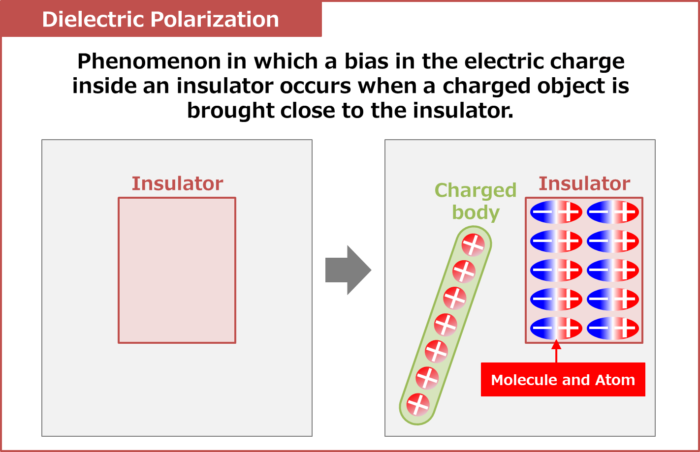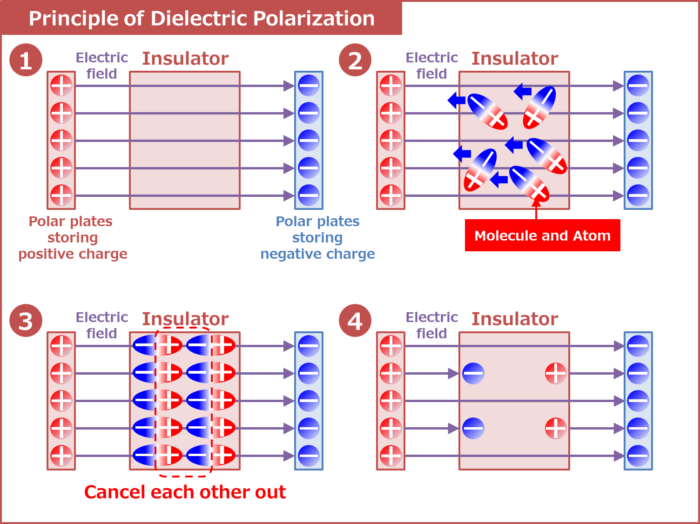Regarding the Dielectric Polarization, this article will explain the information below.
- Explanation of Dielectric Polarization
- Principle of Dielectric Polarization
Dielectric Polarization

Dielectric polarization is a phenomenon that occurs when a charged body is brought close to an insulator, causing a bias in the charge inside the insulator.
When a charged body is placed close to an insulator (a material that does not conduct electricity, such as an underlay), the electrons (which have a negative charge) in the molecules and atoms inside the insulator are subjected to electrostatic forces. The electrons inside the insulator are not free electrons that can move freely. Therefore, the electrons cannot leave the molecule or atom, resulting in a charge bias in individual molecules and atoms. In other words, the entire insulator is subject to charge bias.
As a result, the inside of the insulator produces a charge different from that of the charged body on the "side close to the charged body" and the same charge as the charged body on the "side far from the charged body. This phenomenon of biased electric charge inside an insulator caused by bringing a charged body close to the insulator is called dielectric polarization.
For example, in the above figure, a positively charged body is approached from the left side of the insulator. In this case, the left side of the insulator (the side closer to the charged body) is negatively charged and the right side of the insulator (the side farther from the charged body) is positively charged.
Principle of Dielectric Polarization

The principle of dielectric polarization is explained in the following four steps. To make the explanation easier to understand, let us consider the principle when an insulator is inserted between "a polar plate storing a positive charge" and "a polar plate storing a negative charge.
Principle of Dielectric Polarization
- An electric field is generated between the pole plates in the direction from positive charge to negative charge. Therefore, when an insulator is inserted between the pole plates, an electric field is applied to the insulator.
- When an electric field is not applied to an insulator, the molecules and atoms inside the insulator are oriented in a random direction, so the insulator as a whole has no charge bias. When an electric field is applied to an insulator, the electrons in the molecules and atoms are subjected to electrostatic forces.
- Electrostatic forces bias the orientation of individual molecules and atoms inside the insulator. As a result, the charges cancel each other out on individual molecules and atoms.
- Ultimately, the only charge that remains is on the surface of the insulator (since the outermost molecules and atoms cannot cancel each other out). In the above figure, the left side of the insulator is negatively charged. On the other hand, the right side of the insulator is positively charged. As a result, there is a bias in the charge inside the insulator.
Summary
This article described the following information about "Dielectric Polarization".
- Explanation of Dielectric Polarization
- Principle of Dielectric Polarization
Thank you for reading.